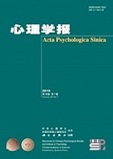|
|
Levels of Processing for Repetition Blindness: Evidence from Chinese Reversed Words
XIA Yi-Ting;LENG Ying;CHEN Yan;WANG Ji-Mei;CHENG Xiao-Rong;LU Jia-Mei
2012, 44 (12):
1583-1595.
doi: 10.3724/SP.J.1041.2012.01583
Repetition blindness (RB) refers to the reduced performance in reporting a repeated item in a rapid serial visual presentation (RSVP) (Kanwisher, 1987; Kanwisher & Potter, 1989; Luo & Caramazza, 1995). The processing level at which the detecting deficit for the repeated item (C2) occurs is still under argument. For example, Token Individuation Theory (Kanwisher, 1987, 1991; Kanwisher & Potter, 1989, 1990) proposed that the repeated items were recognized as types but not individuated as tokens, suggesting that repetition blindness occurred at the perception level. While the Construction and Attribution Theory (Masson, 2004; Whittlesea & Masson, 2005) argued that construction and attribution processes led to repetition blindness when the repeated item was attributed to the wrong source, suggesting that repetition blindness occurred at the semantic level. Thus the present study examined the repetition blindness effect for Chinese reversed words to illustrate the processing level for the repetition blindness. We used a within-subject design with two variables, Repetition of words with three levels (completely repeated, reversedly repeated, and non-repeated), and Semantic similarity for reversed words with two levels (different and similar). The dependent variable was the accuracy rate for reporting C2. No matter the processing level at which the repetition blindness occurs, the accuracy rate in the reversedly repeated condition should be different from that in the non-repeated condition, showing a repetition blindness effect for reversed words. Further, if the accuracy rate for C2 in the similar meaning condition does not differ from that in the different meaning condition, it will suggest that the repetition blindness occurs at the perception level. Otherwise, it will suggest the repetition blindness occurs at the semantic level. Experiment 1 presented all words in sentences and asked participants to judge whether there were repeated words in a sentence, while Experiment 2 used the same stimuli, but asked participants to report the whole sentences. Results from a two-way repeated-measures analysis of variance (ANOVA) showed significant RB in both experiments. In Experiment 1, the accuracy rate for C2 in the similar meaning condition did not differ from that in the different meaning condition, but in Experiment 2, they did differ. Thus results in Experiment 1 supported that RB occurs at the perception level while results in Experiment 2 supported that RB occurs at the semantic level. To investigate whether the contradictive results were caused by different tasks, Experiment 3 presented all experimental material in lists of 6 words and asked participants to report all words in a list, similar to the full reporting task in Experiment 2. Results in Experiment 3 showed different accuracy rates for C2 in the two meaning conditions, thus again supporting that RB occurs at the semantic level. The results indicated: (1) In a RSVP paradigm, the RB effect occurred on Chinese reversed words. (2) The level at which the RB of Chinese words appeared depended on the experimental tasks. In a partial reporting task, the RB of Chinese words appeared at the perception level, and in a full reporting task, it appeared at the semantic level.
Related Articles |
Metrics
|




